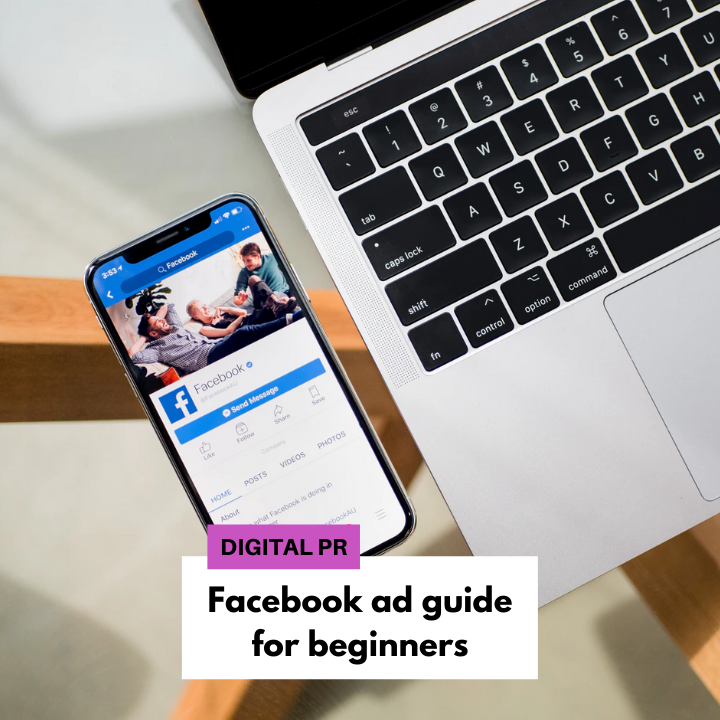
Facebook ad guide for beginners: get the most out of your consumer Facebook ad campaign
Wondering why your organic Facebook campaigns (without paid promotion) aren’t getting any traction, and you’re not seeing the results you had hoped for? The reality is it’s almost impossible to reach your desired audience through organic reach alone. This is because of algorithm changes, which controls the ordering and presentation of posts, so users only see what Facebook consider to be most relevant to them. For more insight into maximising Facebook advertising, check out our most recent podcast here.
As a result, Facebook has limited how much of your own followers you can reach via organic means – leaving very little hope for businesses to reach new audiences! This is because users want to see personal posts on their timeline, and Facebook reaps the benefit of businesses spending money on the platform.
But this isn’t necessarily a bad thing. Facebook ads offer excellent advantages to businesses from start-ups and one-man bands, to multinational companies like Amazon. So, how can consumer brands get the most out of their Facebook ad campaigns?
Firstly, let’s start with why you should be using Facebook ads for your consumer business. Aside from underperforming organic campaigns, Facebook is still the number one platform for marketers to run paid ads since it offers the largest user-base of any social network and one of the most engaged, with really easy to use but highly sophisticated audience targeting to boot.
Facebook has an impressive 1.6 billion daily active users that you can reach through detailed target audiences, bespoke to your business’ needs. You can reach people by age, interests, behaviour and location. From acquiring new customers, to increasing leads, website traffic, sales and building better brand awareness, Facebook ads can help businesses of all shapes and sizes grow, fast.
If that’s not enough to lure you in, Facebook ads are incredibly budget-friendly (you can set your own!), you can make adjustments to your ads in real-time (if it’s not performing as you had hoped), it can increase your SEO rankings, build engagement, drive offline sales and repeat business (just to name a few!).
If you’re wondering how you can get the most out of your consumer Facebook ad campaign, here is a handy step by step guide to setting up your Facebook ad campaign.
There are a couple of different ways to run ads on Facebook. You can either create a new ad or ‘boost’ an existing post. It’s only recommended to boost posts that are already performing well (if it is not performing well without an ad budget, then it is not going to perform well with one!) Of course it does also depend on what your goal is, for example, whether that is to raise brand awareness, drive website clicks or increase your page following.
Before you get started, you should create an account with Facebook Ads Manager. You will need to have a Facebook Business Manager account to do this, click here to find out more on how to do this.
Step 1. Create a campaign and select the correct campaign objective
The one you choose will ultimately determine the direction you take with your ads, including the creative and ad types that you choose. There are 11 different objectives to choose from. The list includes everything from general brand awareness, to getting installs of your app, to increasing traffic to your online store.
- Increase in online store traffic? – Set up a campaign that gets more website visitors.
- Increase in offline sales? – Set up a campaign that promotes your business locally.
- Raising brand awareness? – Run a campaign that will get more leads.
Step 2. Define your target audience
The ad targeting function allows you pinpoint specific people who are most likely to buy your products and/or services. You can get granular with your ad targeting, only serving ads to relevant users. But the key is to not get too granular – you want your audience to be broad enough so that you are not losing any leads, but not so broad that it is not relevant. Facebook has a handy meter which will guide you.

Creating an audience
Create a bespoke audience by defining specific parameters such as:
- Location: do you want to target locally, nationally, or internationally? You can select specific regions and increase or decrease the surrounding radius. Bear in mind that bigger audiences will often require a larger budget to be successful
- Age: if your audience has a wide age range you can segment your ads, rather than take a one-size-fits-all approach
- Interests: based on your users’ “likes” and Facebook activity, the platform can highlight potential customers
- Demographics: information such as education level or relationship status can help you target particular social media personas
Remarketing or retargeting ads are a great way to win over hot leads. You can use them to target people who have visited your website through tools such as Facebook Pixel.
Lookalike audiences empower businesses to target new prospects based on their current fans or followers. Facebook identifies an audience that resembles your most loyal customers or people who have already engaged with your ad campaigns.
Step 3. Design your ad creatives
Now it’s time create a super sleek, eye-catching and engaging ad. Simple, right? Whether it’s humorous or uses striking imagery, the more entertaining you make your ads, the less they feel like ads. If you can use video, then this is a must! Videos are great for both raising awareness and grabbing users’ attention, and you will almost certainly get better results from video-based ads.
Related: Smartphone video – a game changer?
Step 4. Create a killer call-to-action
Your call-to-action should be in line with your campaign goal. Use a strong command verb, be clear and try to invoke enthusiasm or emotion.
Step 5. Test and measure your campaigns
There are a lot of metrics available, and it can be a little overwhelming! But if you’re a newbie it’s important to start by looking at the basics. In Ads Manager, you can review results, reach, clicks, cost per result and more.
- Blend paid campaigns with organic activity
To maximise results, practice a hybrid social media strategy, combining paid with organic activity. We’ve put together a guide to help you create your own killer social media marketing strategy here.
We hope this Facebook advertising guide has been useful, but if you would like more tips on creating, managing and implementing awesome Facebook ad campaigns, check out our most recent podcast episode which is all about how to maximise Facebook advertising, or please drop us a line today for a friendly chat with one of our social media gurus.
Social media is one of the most impactful and cost effective ways to tell the world how brilliant your company is, but do you know how to cut through the noise? Now is the time to save yourself precious time and energy by signing up to our Social Media Engagement Success service. We’ll do the hard work of managing your channels leaving you free to sit back and reap the rewards.
We know that social media can be an essential growth tool for your company. Download our free Social Media Content Planner now and change how you engage with your audience!





